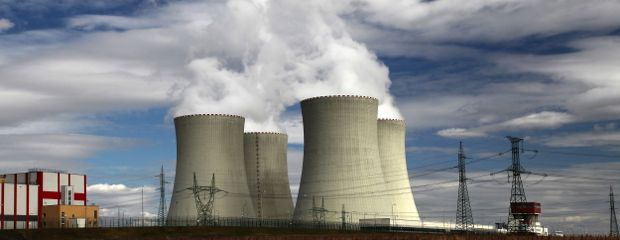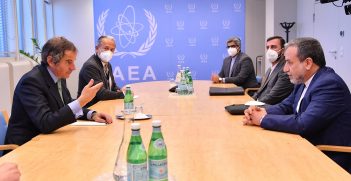South Australia and the Nuclear Fuel Cycle: International Implications

The South Australian Nuclear Fuel Cycle Royal Commission released its Tentative Findings on 15 February and is due to release its final report on 6 May. Government decisions in response to the report will attract considerable international interest. In particular, will Australia contribute to international efforts to reduce the risk of nuclear weapons proliferation or act in a way that could hinder such efforts?
This question concerns what are termed proliferation-sensitive nuclear capabilities, namely uranium enrichment and reprocessing (separation of plutonium from spent fuel). Enrichment and reprocessing technologies are used in the civil fuel cycle but can also be used to produce fissile material for nuclear weapons. The dangers of nuclear latency – the spread of potential nuclear weapons capability through ostensibly peaceful enrichment and reprocessing programs – are well-understood. No one can be sure how any country, however well trusted, might react to external pressures decades into the future. For this reason increasing attention is being given to multilateral approaches, by which these facilities would not be national projects but would be controlled by a group of countries.
This issue of nuclear latency is relevant to outcomes from the Royal Commission in two respects: (a) if Australia establishes enrichment and reprocessing programs, will this add to proliferation risk, either directly or indirectly; and (b) could other actions by Australia, such as developing fuel leasing arrangements, reduce proliferation risk by removing the rationale for other countries to pursue enrichment and reprocessing programs?
On whether Australia might establish enrichment or reprocessing, the Commission in its Tentative Findings makes the following conclusions: for reprocessing, commercial viability has been undercut by the availability and low cost of uranium, and in any event without nuclear power generation a reprocessing facility would not be needed in South Australia; for enrichment, a combination of an oversupplied and uncertain global market and significant barriers to entry means there is no opportunity for commercial development in South Australia for the foreseeable future, however, the Commission suggests that enrichment be carefully considered in the context of fuel leasing, which links uranium supply and processing with its eventual return for disposal.
The Commission is well aware of the importance of the latency issue and recommends that if a fuel leasing arrangement does provide the basis to establish enrichment facilities, “it would be desirable to undertake that activity under a multilateral arrangement with partner countries. The participation of other countries in those activities provides another level of assurance that any proliferation-sensitive technology or material is not being used in the host country for non-peaceful purposes.” The Commission cites some of the principal sources on this, such as the International Atomic Energy Agency’s (IAEA) 2005 report Multilateral Approaches to the Nuclear Fuel Cycle. The Commission also has a paper I published in 2013 on how a multilateral enrichment centre could work in Australia.
The Australian Government is also well aware of the proliferation sensitivities. Its submission to the Commission states that: “Development and operation of enrichment or reprocessing facilities in South Australia would need to be modelled on international best practice in relation to nuclear non-proliferation … there should be appropriate multinational participation in the development and operation of facilities. There would be a strong expectation internationally that any development of enrichment or reprocessing capacity in South Australia would follow these guidelines.”
In fact, in relation to the possibility of an enrichment project in Australia, the latency issue really takes care of itself. It is most unlikely Australia could develop commercially viable indigenous enrichment technology. For example, the Australian-invented Silex laser enrichment process was too expensive to develop further in Australia and was sold to General Electric in the US. Moreover, any project here would depend on technology supplied by a foreign partner. Currently only the European consortium Urenco and Russia have commercially viable enrichment technology, and they would supply only in accordance with the Nuclear Suppliers Group Guidelines referred to above. As the Australian Government’s submission to the Commission states, if any enrichment project did eventuate in the future, the international community would expect Australia to commit to a multilateral approach.
Fuel leasing would involve a supplier or group of suppliers providing complete fuel assemblies to customer countries under long-term fuel supply guarantees and with an international repository for the spent fuel. The customer country would have no justification for maintaining enrichment and reprocessing programs. Thus fuel leasing would be an effective counter to the continuing spread of these capabilities. Australia would not need to undertake enrichment and other uranium processing steps – as the Commission points out, this is not practical given the current global oversupply situation – but could form an international partnership under which its uranium for fuel leasing would be processed offshore. Some uranium processing industries might be established in Australia in the future when commercial circumstances are more favourable.
As I pointed out when the Commission’s Tentative Findings were released, the Commission has shown how Australia could take the lead in establishing a regional approach to the nuclear fuel cycle. This would be by addressing the issue of nuclear latency in other countries, deriving very substantial economic benefit, and becoming a leader in fuel management science and technology. A regional approach on nuclear fuel could lead to a broader nuclear energy community, promoting cooperation in nuclear safety, nuclear security and non-proliferation. The Commission’s findings suggest some practical steps Australia could take to reduce proliferation risks and strengthen regional nuclear governance.
John Carlson AM was Director General of the Australian Safeguards and Non-Proliferation Office from 1989 until his retirement in 2010. He is a member of the Royal Commission’s Expert Advisory Committee. His other appointments include Counselor, Nuclear Threat Initiative (Washington), Nonresident Fellow, Lowy Institute and member of the Asia Pacific Leadership Network on Nuclear Non-Proliferation and Disarmament. This article is published under a Creative Commons Licence. It may be republished with attribution.





